Test Pegasus Savona EVO 10 ABS: Das Trekkingbike Pegasus Savona EVO 10 ist eines der ersten Modelle mit dem neuen E-Bike-ABS von Bosch. Velomotion war mit dem Rad im frühlingshaften Vinschgau unterwegs, um sich von der Funktion des ABS-Systems zu überzeugen.
Auf den Bergen vergeht der letzte Schnee, doch hier unten im Etschtal ist es so mild, dass man die lange Hose endlich mal im Hotelzimmer lassen kann. Noch geht es ruhig zu in den Apfelplantagen. Radler sind kaum unterwegs; Split, Staub und Erde bedecken die Straßenränder und haben sich in den Kurven angesammelt. Wer auf solchem Terrain die ersten Kilometer des Jahres absolviert, muss besonders gut aufpassen: Die Reflexe sind noch nicht wieder ganz erwacht, und die angenehme Witterung verführt einen dazu, vom Frühling zu träumen, anstatt voll konzentriert auf die Strecke zu achten. Jetzt bloß keine Schreckbremsung, die das Vorderrad des Pegasus Savona EVO 10 blockieren lassen könnte!
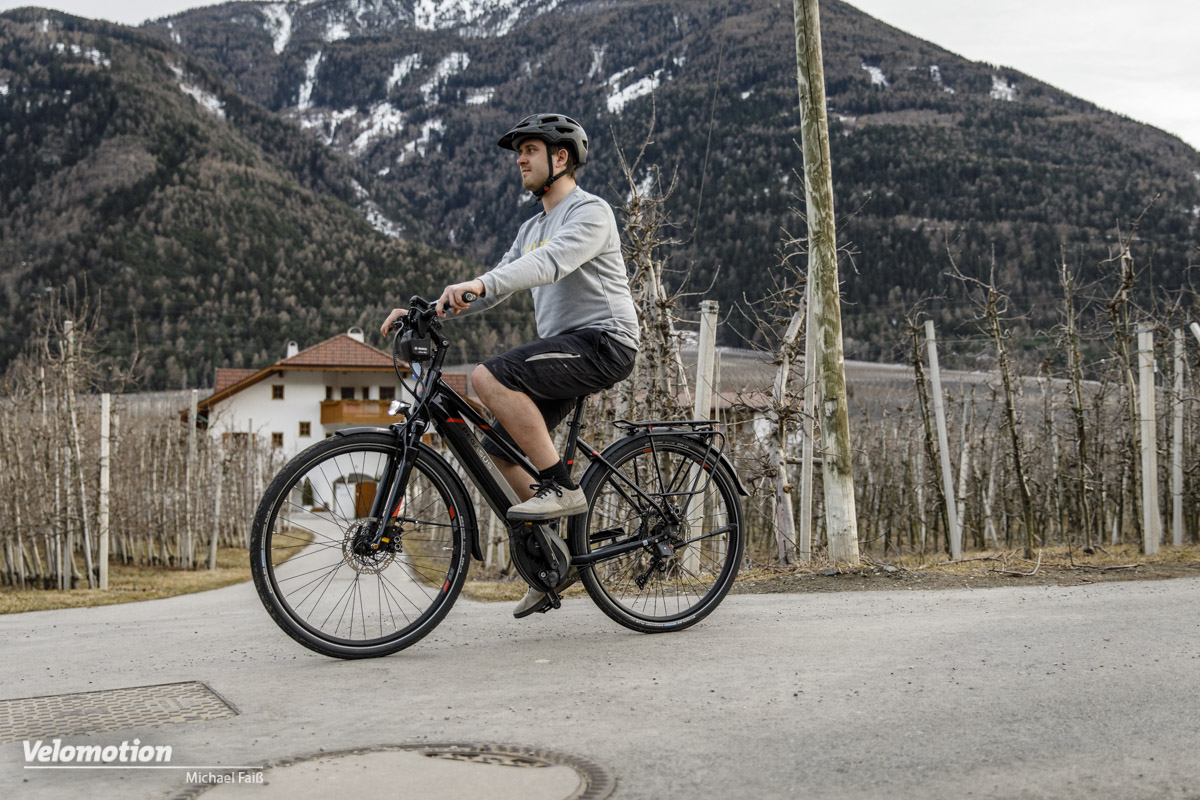
Pegasus Savona EVO 10 ABS: Vollbremsung erwünscht
Aber halt – genau deswegen sind wir ja hier unterwegs. Unser Untersatz, das neue Pegasus Savona EVO 10, ist nämlich mit einer Technik ausgestattet, die genau solche Situationen verhindern soll. Das Antiblockiersystem, beim Auto längst Standard und seit Januar 2017 endlich auch bei neu zugelassenen Motorrädern ab 125 ccm Hubraum vorgeschrieben, ist am Fahrrad angekommen. Oder besser gesagt, am E-Bike – denn um das ABS zu betreiben, braucht man natürlich Strom.
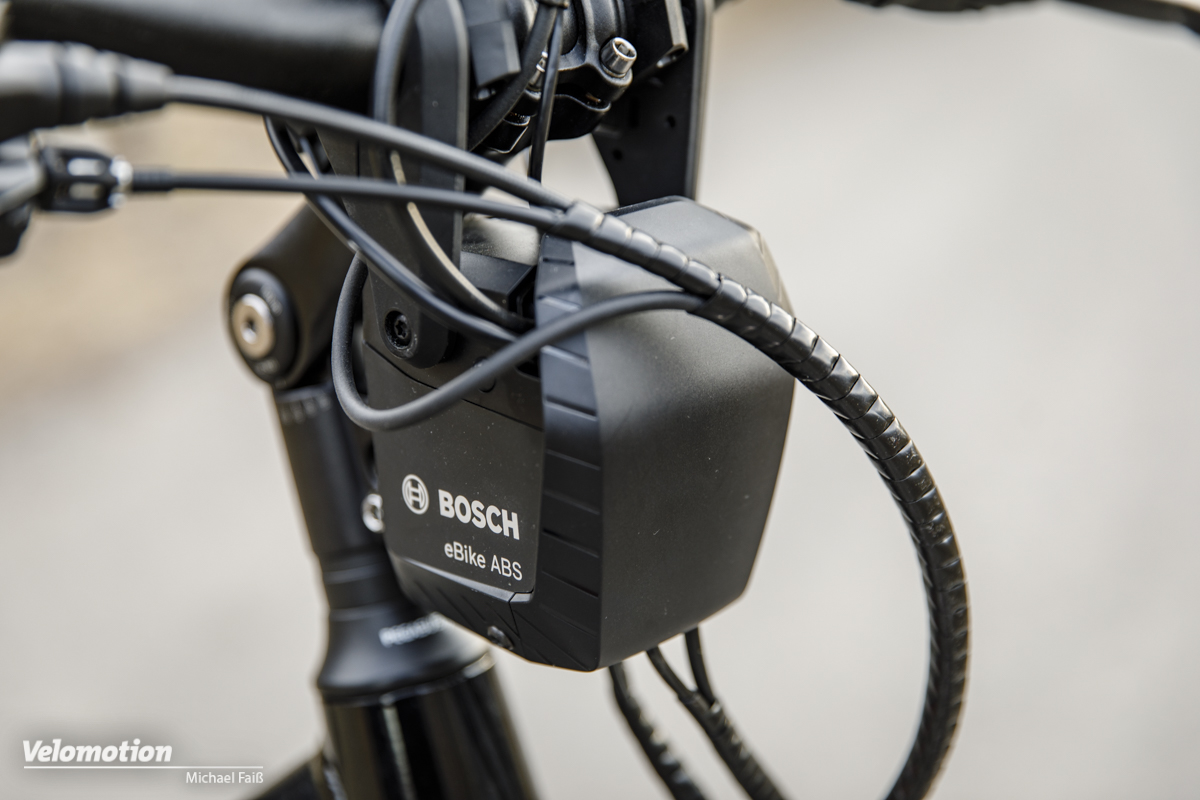
Entwickelt wurde das seit diesem Frühjahr erhältliche System von Bosch. Der Automotive-Spezialist konnte dabei auf die Technologie seines Motorrad-ABS zurückgreifen, das seit Jahrzehnten erprobt ist und laut Schätzungen des ADAC über 20 % aller Motorradunfälle und sogar 45 % der gefürchteten Alleinunfälle verhindern kann. Was Pedelec-Crashs angeht, spricht Bosch von einer Unfallreduzierung um 20 % – eine beachtliche Zahl angesichts der Tatsache, dass die Zahl der Stürze mit dem E-Bike parallel zu dessen Verbreitung ansteigt.

Pegasus Savona EVO 10 ABS: Wie funktioniert das ABS nun eigentlich?
Einfach gesagt, dient die Technik dazu, zwei Unfalltypen zu verhindern: Bei einer Vollbremsung aus gerader Fahrt soll vermieden werden, dass das Hinterrad vom Boden abhebt – der gefürchtete Überschlag. Und bei Bremsungen auf losem Untergrund soll seitliches Wegrutschen oder Ausbrechen verhindert werden. Beides ist gerade angesichts der hohen Verzögerungskräfte moderner Scheibenbremsen selbst bei mäßigem Tempo durchaus möglich, und nun sind es genau solche Bremsanlagen, die Abhilfe schaffen können. An den Bremsscheiben beider Laufräder sitzen nämlich Sensoren, die die Raddrehzahl messen. Kommt es zu einem starken Abfall der Drehzahl bzw. zu einem deutlichen Drehzahlunterschied vorne und hinten, senkt die in der Box am Lenker angebrachte ABS-Kontrolleinheit den Bremsdruck für Sekundenbruchteile, bis das Laufrad wieder rollt; dann wird wieder Bremsdruck aufgebaut. Dieser Vorgang kann sich etliche Male pro Sekunde wiederholen, sodass man trotz voll durchgezogenem Bremshebel sicher zum Stehen kommt.

Soweit jedenfalls die Theorie – die sich mit dem Pegasus Savona EVO 10 ABS auf den Radwegen des Vinschgau eindrucksvoll beweisen ließ. Denn in der Praxis hält das E-Bike-ABS, was es verspricht. Erkennbar ist es durch die schon erwähnte Steuereinheit sowie durch eine Kontrollleuchte am Vorbau, die beim Aktivieren des Antriebs kurz aufleuchtet. Oberhalb von 6 km/h stellt sich das System scharf, das an die Vierkolben-Vorderradbremse gekoppelt ist – wir wollen es natürlich bei deutlich höherem Tempo ausprobieren. Also ein kurzer Sprint, der durch den kraftvollen Bosch Performance CX Motor ein Kinderspiel ist, und dann die kräftige Betätigung des linken Bremshebels: Deutlich ist in der Hand jenes Pulsieren zu spüren, das Autofahrer vom Bremspedal kennen, wenn das ABS regelt. Was sich anfühlt wie eine Kraft, die gegen den Hebel drückt, ist die Volumenerweiterung im System, durch die die Bremskraft reduziert wird. „Ich kann ja gar nicht voll bremsen“, schießt es einem durch den Kopf – doch da steht man auch schon. Was wie eine Entschärfung des potenten Magura-Verzögerers wahrgenommen wird, ist in Wirklichkeit dessen Optimierung – so feinfühlig kann kein Profi die Bremse modulieren. Hinten kann man nach wie vor nach Herzenslust blockieren, doch das ist bekanntlich viel weniger folgenschwer. Auch bei Schräglage funktioniert das System perfekt, etwa, wenn eine rutschige Kurve gefahren wird und ein Hindernis abrupt zum Bremsen zwingt.
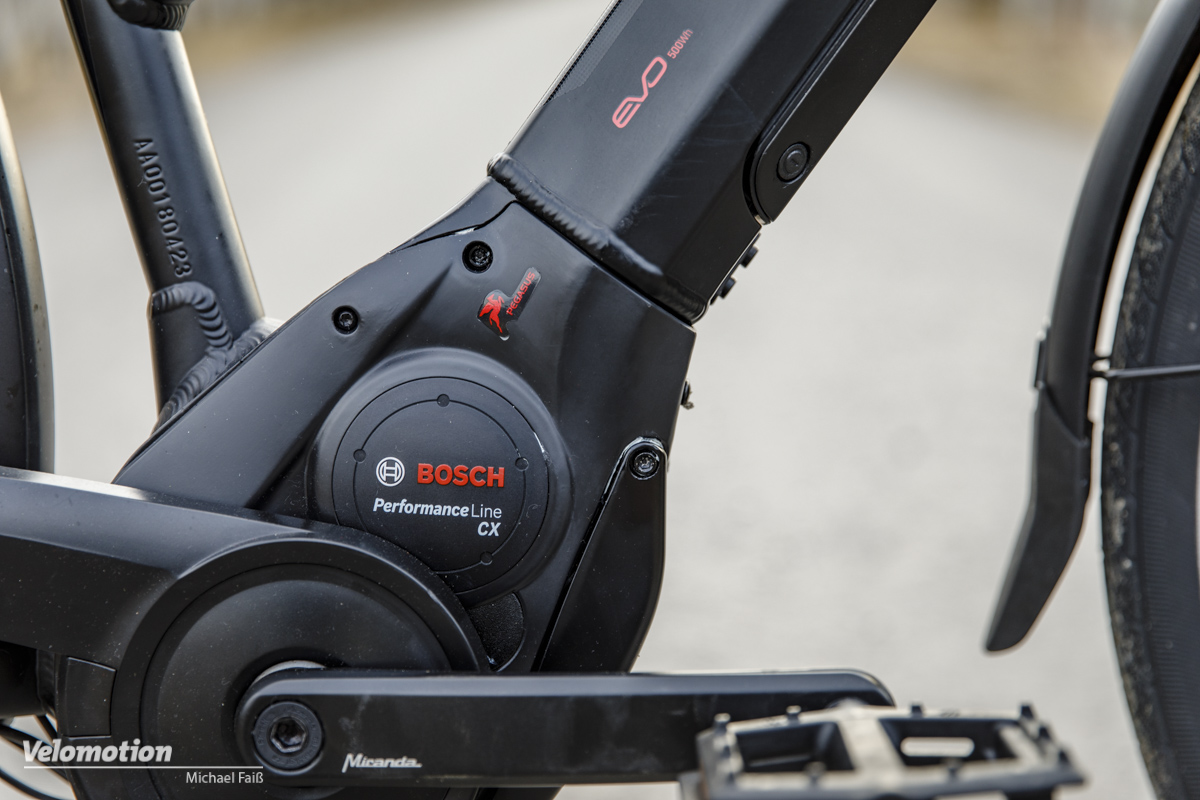
| Rahmen | Pegasus Savona |
| Federgabel | SR Suntour SF18 Mobie 25 LOR Air CTS |
| Antrieb | Bosch Performance CX |
| Akku | Bosch Powertube 500 |
| Laufräder | Pegasus Taurus 2000 |
| Reifen | Schwalbe Marathon Plus, 47-622 |
| Schaltwerk | Shimano Deore 10-fach |
| Schalthebel | Shimano Deore 10-fach |
| Kurbel | Miranda |
| Umwerfer | Ohne |
| Bremse | Magura CMe ABS |
| Sattelstütze | Aluminium |
| Sattel | Selle Royal Look-In Moderate |
| Vorbau | Verstellbar |
| Lenker | Aluminium |
ABS am E-Bike? Macht Sinn!
Aktiv abschalten lässt sich das ABS nicht; wer jedoch den Antrieb des Savona aktiviert, kann sich von seiner Wirksamkeit überzeugen. Kraftvoller und gedankenloser Zug am Hebel ist ohne ABS nicht drin – schon ein Bruchteil der Handkraft reicht aus, um das Hinterrad gefährlich zu entlasten. Selbst bei niedrigem Tempo lässt sich die Vierkolbenbremse nur mit viel Gefühl beherrschen; Gelegenheitsradler dürften mit ihr überfordert sein. Aber auch normale Trekking-Discs können in Extremsituationen zu scharf sein, sei es durch eine Fehlreaktion des Fahrers oder die Fahrbahnbeschaffenheit. Dass das Bosch-ABS also Sinn macht, steht außer Frage.

Umsonst ist die moderne Sicherheitstechnik natürlich nicht zu haben: Mit 3.799 Euro kostet das Savona EVO 10 ABS 800 Euro mehr als das weitgehend identisch ausgestattete Pegasus Premio EVO 10. Die 800 Gramm Mehrgewicht, die das ABS mit sich bringt, relativieren sich durch abweichende Ausstattungsdetails – am Ende ist das Savona gerade mal 350 Gramm schwerer als das Premio.
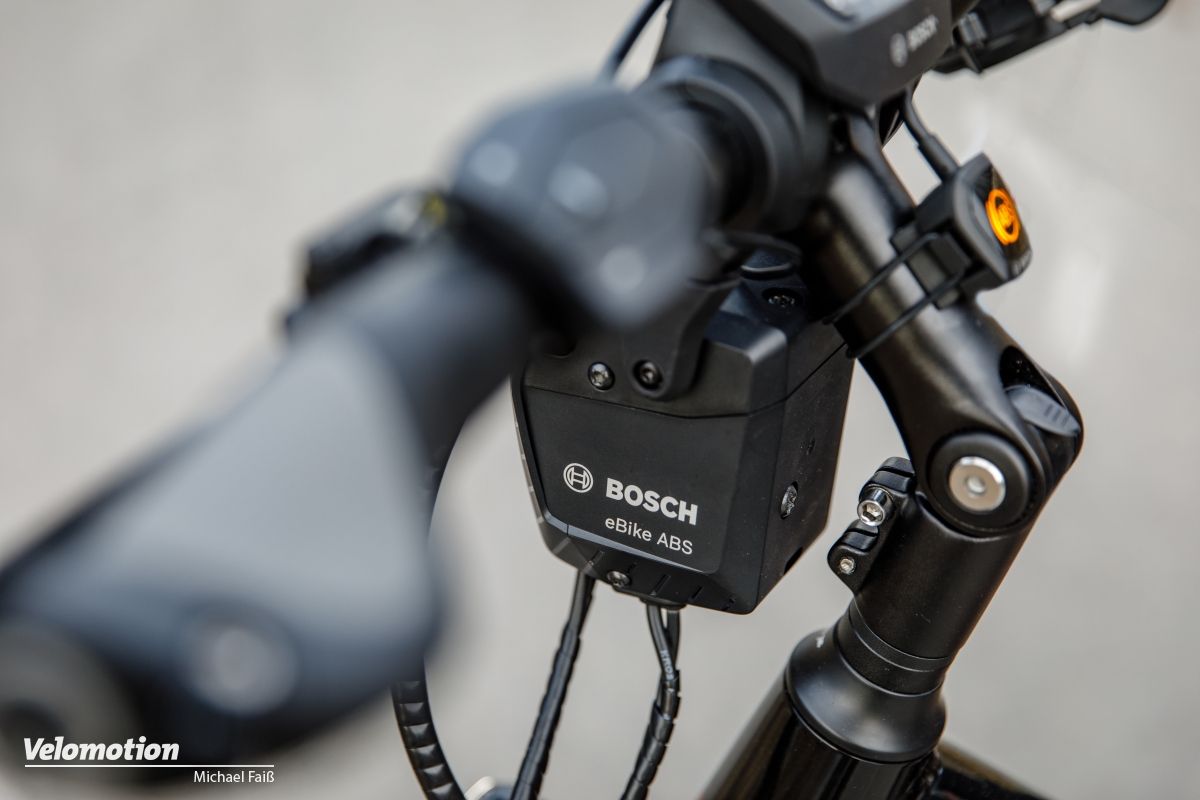
Und was die Optik angeht, können „Early adopters“ beruhigt sein: Dass die Kontrolleinheit ins Rahmeninnere wandert, dürfte so schnell nicht zu erwarten sein – kleiner kann sie kaum werden, außerdem muss sie ja irgendwo zwischen Bremshebel und Bremssattel sitzen. Wer sich in der kommenden Saison also ein E-Bike zulegen will, kann getrost zum ABS-Modell greifen. Sicherer kann man derzeit nicht auf zwei Rädern unterwegs sein, auch wenn sich im Verlauf der Saison wieder die gewohnten Reflexe einstellen.

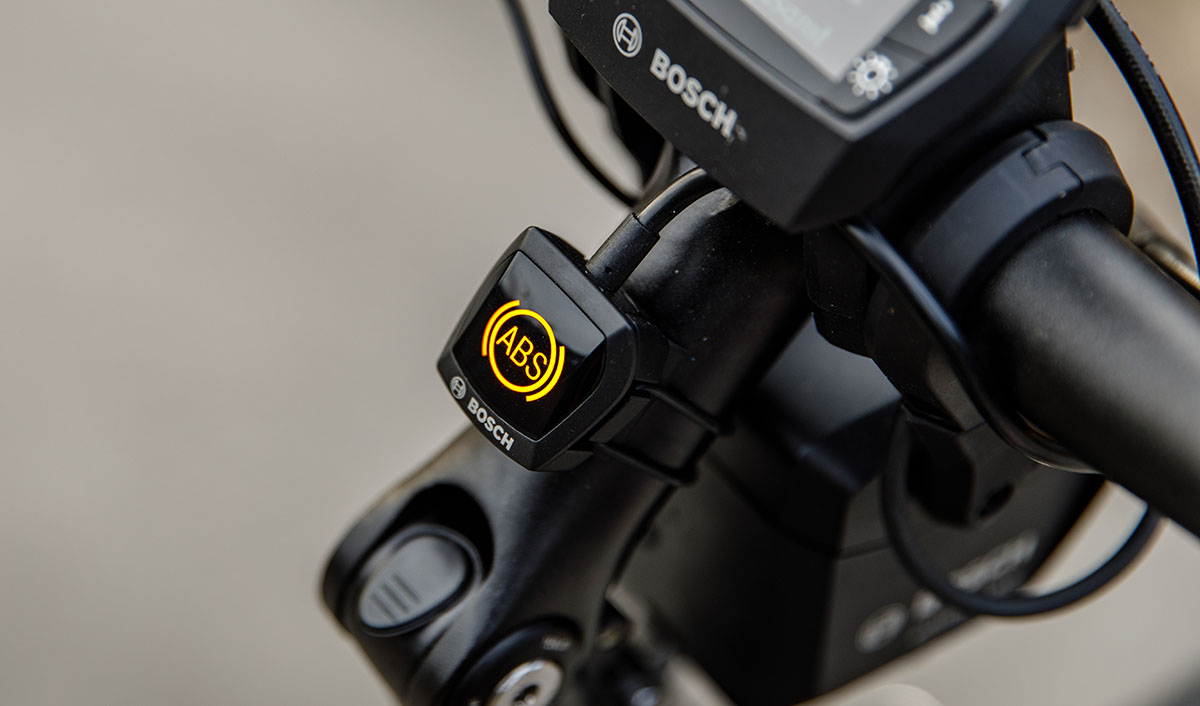
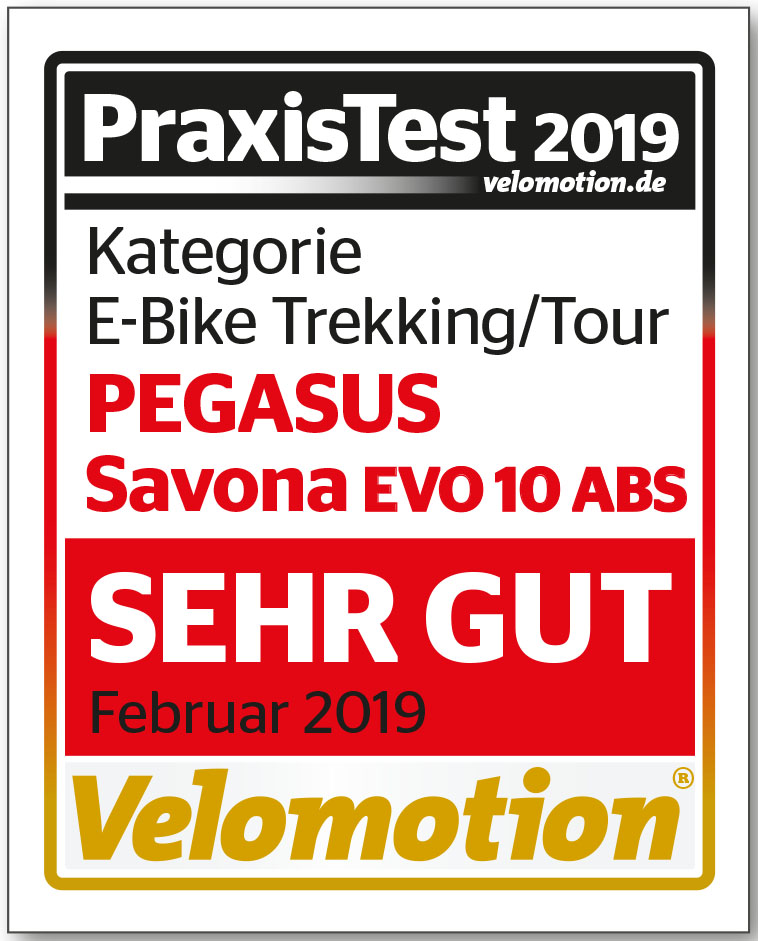


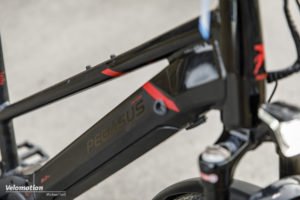


Schreibe einen Kommentar